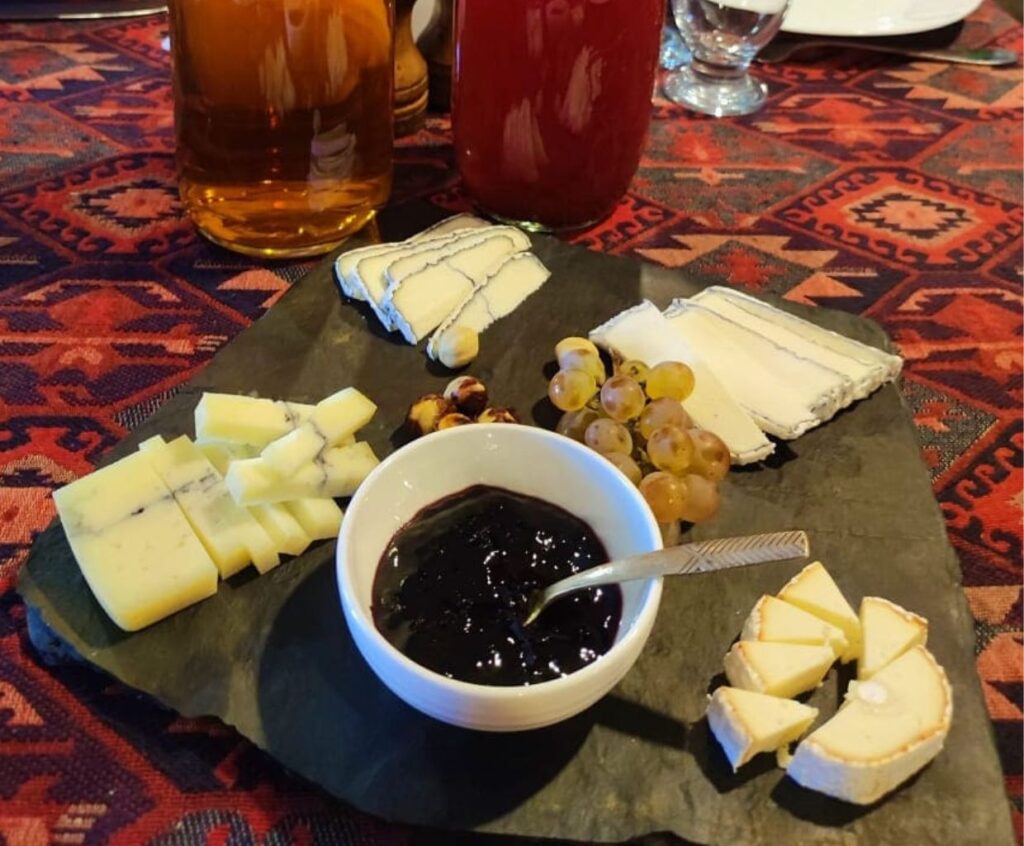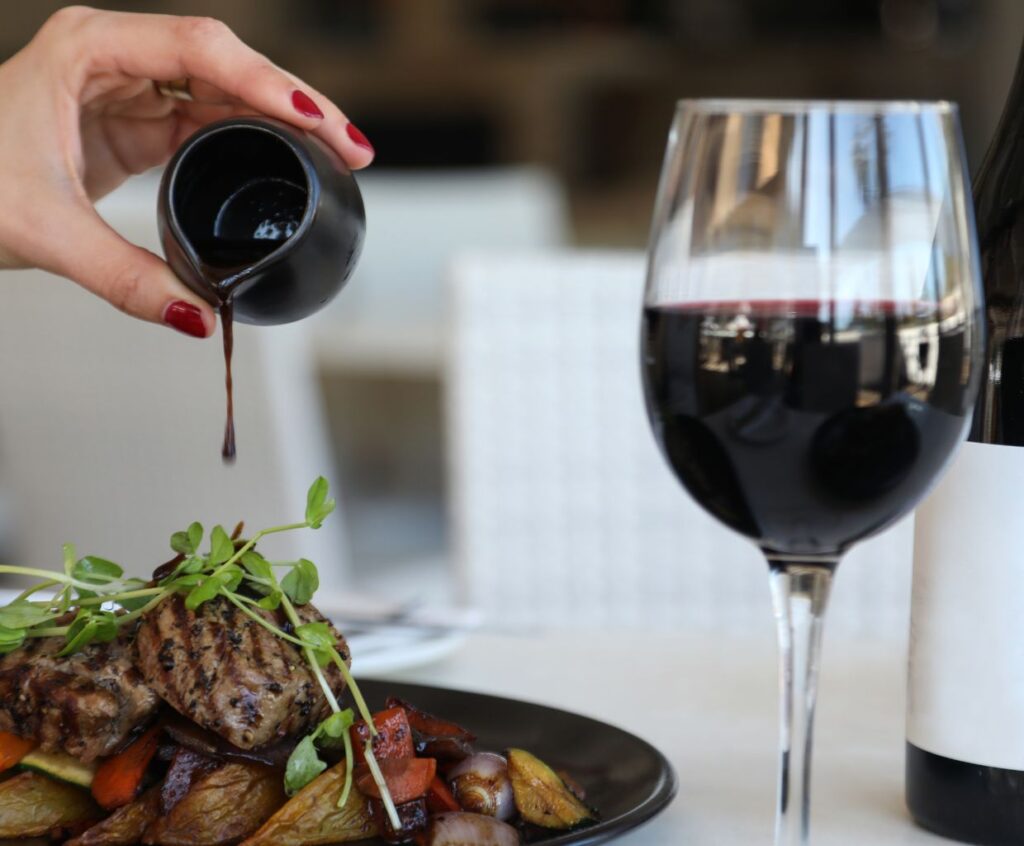Perfect Harmony: White Wine and Food Pairing Guide for an Exquisite Dining Experience
Welcome to the ultimate guide for perfect harmony between white wine and food! Whether you are a wine connoisseur or love indulging in exquisite dining experiences, understanding the art of pairing white wine with different dishes can elevate your culinary journey.
Why White Wine?
White wine, with its wide range of flavors and styles, offers a versatility that complements various dishes. White wine’s acidity, sweetness, and aromatics can enhance the flood flavoring, a symphony of taste on your palate.
From light and crisp whites to full-bodied and buy varieties, there is a white wine out there to suit every dish and personal preference.
Pairing Tips
1. Consider the Intensity
When pairing white wine with food, it’s essential to consider the intensity of both tne and the dish. Light-bodied white wines, such as Sauvignon Blanc or Pinot Grigio, work well with delicate dishes like seafood, salads, and fresh cheeses.
On the other hand, Richmond’s affluent fuller whites like Chardonnay or Viognier pair beautifully with creamy sauces, roasted poultry, or even lobster.
2. Match Flavors
Finding common familiars between the wine and the dish can create a harmonious pairing. For example, a citrusy and acidic white wine like Riesling can complement spicy Asian cuisine or tangy goat cheese.
Alternatively, a buttery Chardonnay can enhance the richness of dishes with creamy sauces or buttery components like lobster or scallops.
3. Balance Acidity
AciditWhite wine’s acidity through rich and fatty foods, cleansing the palate and creating balance. If you’re serving a dish with a high-fat content, such as grilled salmon or creamy pasta, opt for a white wine with higher acidity, like a Sauvignon Blanc or dry sparkling wine, to freshen your taste buds.
White Wine and Food Pairing Suggestions
1. Sauvignon Blanc
-
- Pair with goat cheese and arugula salad
-
- Enjoy with grilled asparagus and lemon butter sauce
-
- It perfectly complements fresh oysters on the half-shell
2. Chardonnay
-
- Savor with roasted chicken and creamy mashed potatoes
-
- Indulge in a buttery lobster or crab dish
-
- Pair with brie cheese and toasted baguette slices
3. Riesling
-
- Delight in spicy Thai or Indian cuisine
-
- Pair with seared scallops and a citrusy beurre blanc sauce
-
- Enjoy with a tangy goat cheese and honey drizzle
Remember, these are just a few suggestions to get yostartwhite wine and food pairing journey. Feel free to experiment and trust your taste buds. The beauty of wine and food pairing lies in discovering your preferences and creating unforgettable dining experiences. Cheers and b,on appétit!
How can I enhance the dining experience by pairing white wine with vegetarian or vegan dishes?
Pairing white wine with vegetarian or vegan dishes can enhance the dining experience by creating harmonious flavor combinations. Here are some tips to help you enhance the dining experience:
1. Consider the flavors: Take iConsiderlavors of the vegetarian or vegan dish you are serving. Are they light and delicate or rich and spicy? This will help determine the type of white wine that is complementingish.
2. Match the intensity: Pair lighter white wines such as Sauvignon Blanc or Pinot Grigio with lighter, more delicate vegetarian dishes. For example, a crisp Sauvignon Blanc can complement a fresh salad or grilled vegetables. On the other hand, richer white wines like Chardonnay or Viognier can pair well with more substantial vegan dishes like creamy pasta or risotto.
3. Consider the acidity: Vegetarian and vegan dishes often incorporate citrus or tangy flavors. White with higher acidity, such as Riesling or Pinot Grigio, can help balance the flavors and provide a refreshing contrast.
4. Experiment with aromatic whites: Aromatic white wines like Gewürztraminer or Torrontés can add an extra to vegetarian or vegan dishes. These wines often have intense floral or fruity aromas that can complement dishes with bold flavors like spicy curries or Asian stir-fries.
5. Don’t be afraid of bubbles: Sparkling white wines, like Champagne or Prosecco, can bring a festive feel to your vegetarian or vegan dining experience. They work well as an aperitif or to accompany lighter dishes like sushi or appetizers.
6. Consider regional pairings: If you are serving a cruise from a specific region, explore white wines from that region. For example, if you serve Mediterranean dishes, pair them with a crisp Greek Assyrtiko or a Spanish Albariño.
7. Seek advice expert advice and hesitate to ask for recommendations from wine experts or your local wine shop. They can provide valuable insights based on your specific or vegan dishes and wine preferences.
Remember, these are general guidelines, and personal preferences play a significant role in pairing wine with vegetarian or vegan dishes. Feel free to experiment and trust your taste buds to find the best combinations that enhance your dining experience.
What are some expert tips for selecting the recipe to complement rich and creamy sauces?
Here are some expert tips for selecting the right white wine to complement rich and creamy sauces:
1. Consider the intenssauce’s intensity. The sauce is heavily flavored and rich; choose a white wine with enough body and flavor to stand up to it. Look for options like Chardonnay, Viognier, or a White Rhône Blend.
2. Balance the acidity: Creamy sauces can be quite pretty, so it’s essential to choose a white wine with enough acidity to cut through the richness and provide balance. Sauvignon Blanc, Pinot Grigio, or Albariño are good options as they offer refreshing acidity.
3. Look for wines with subtle oak influence: Creamy sauces often have a buttery or nutty flavor, so a white wine with a touch of oak can complement them well. However, be cautious not to choose a wine with overpowering oak flavors that might clash with the sauce. Try a lightly oaked Chardonnay or a white Bordeaux blend.
4. Consider regional pairings: Different regions have traditional food and wine pairings that work well together. For example, if yite wine from Italy like a Gavi or Vermentino can be a great choice. If you’re serving a creamy Italian pasta display, Burgundy or a Sancerre can be an excellent complement.
5. E for French cuisine. Experiment with off-dry wines: If you’re feeling adventurous, can creamy sauces with slightly sweet or off-dry white wines. The hint ness can create a beautiful contrast with the rich sauces riesling; Gewürztraminer, or even a Moscato, can work well in timber; personal taste plays a significant role in pairing wine with food, so don’t be afraid to experiment, and find your fate combinations.




